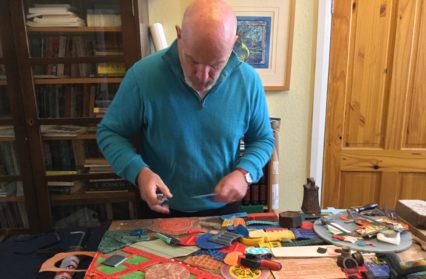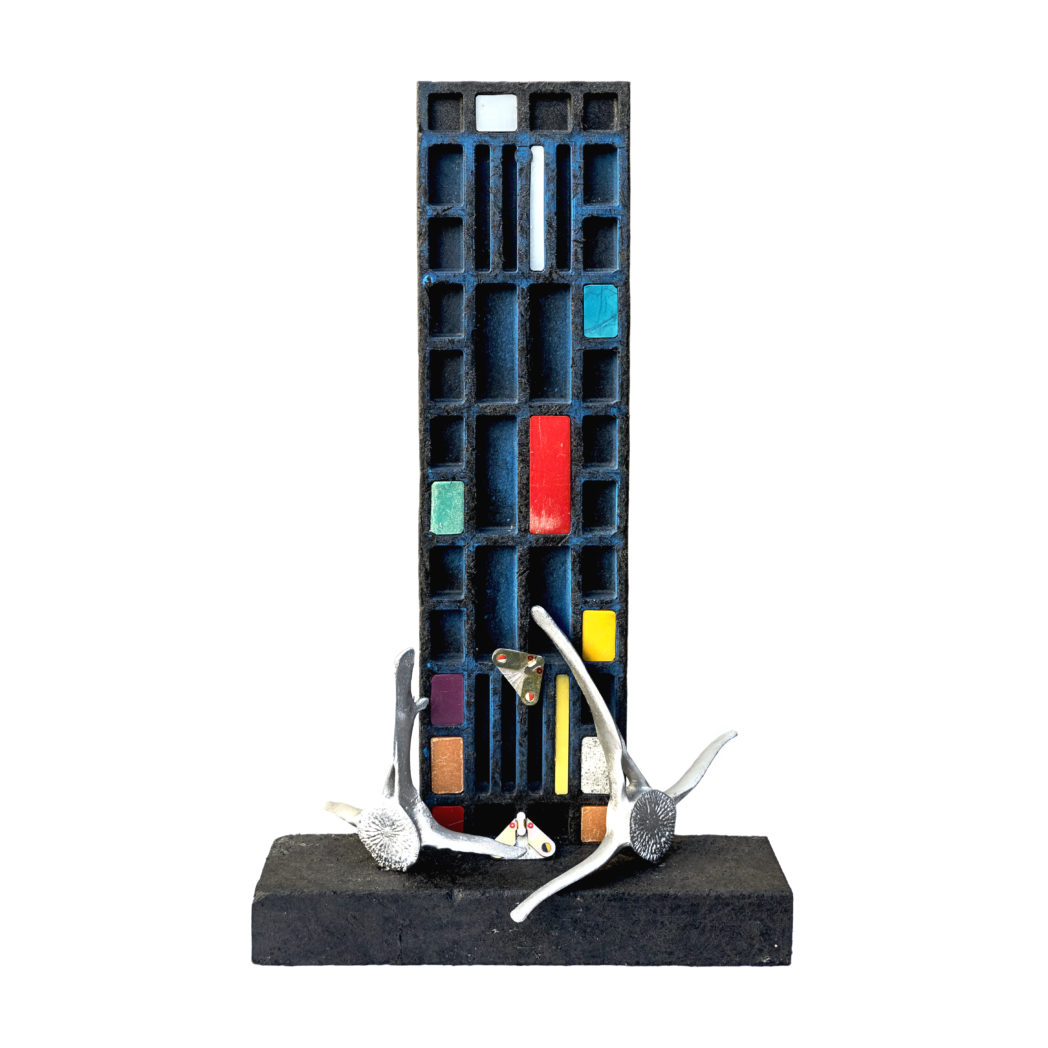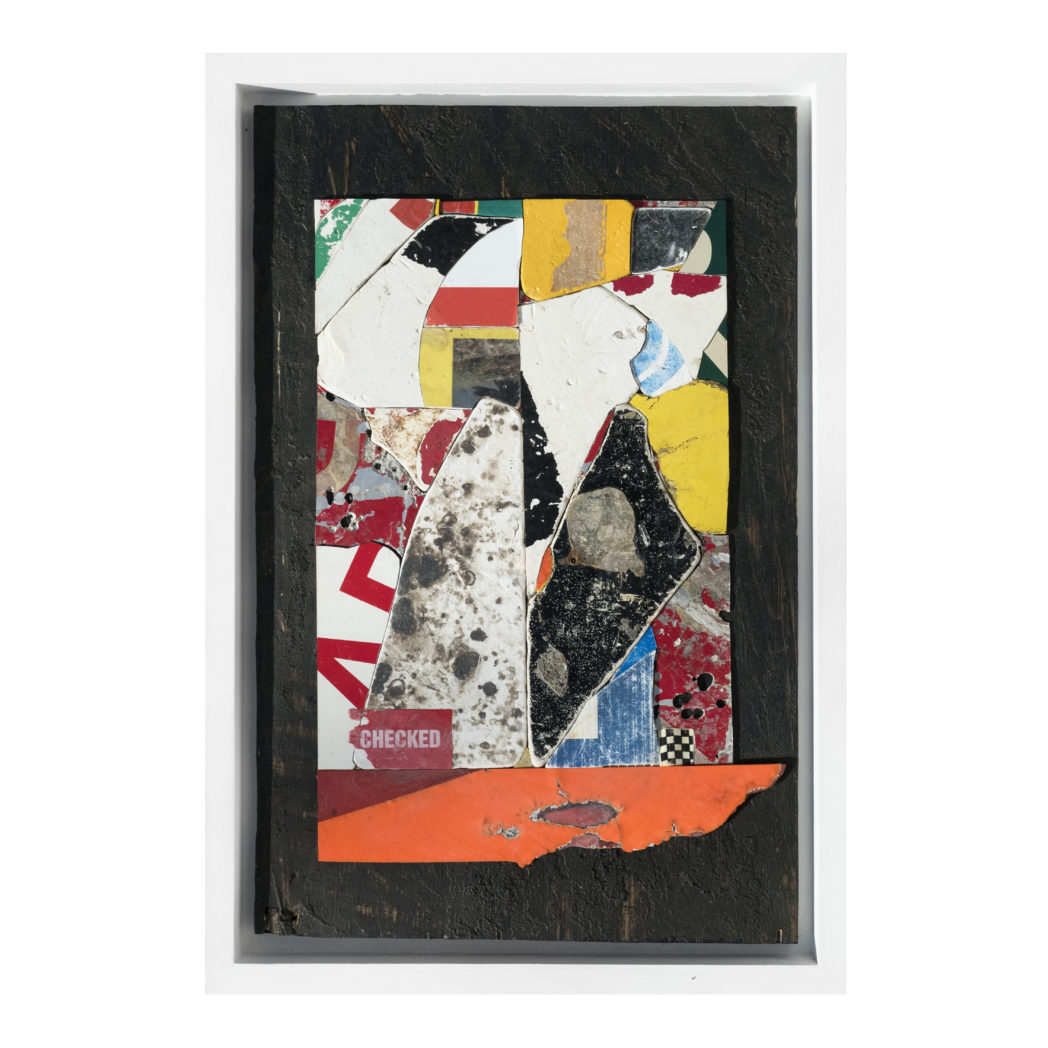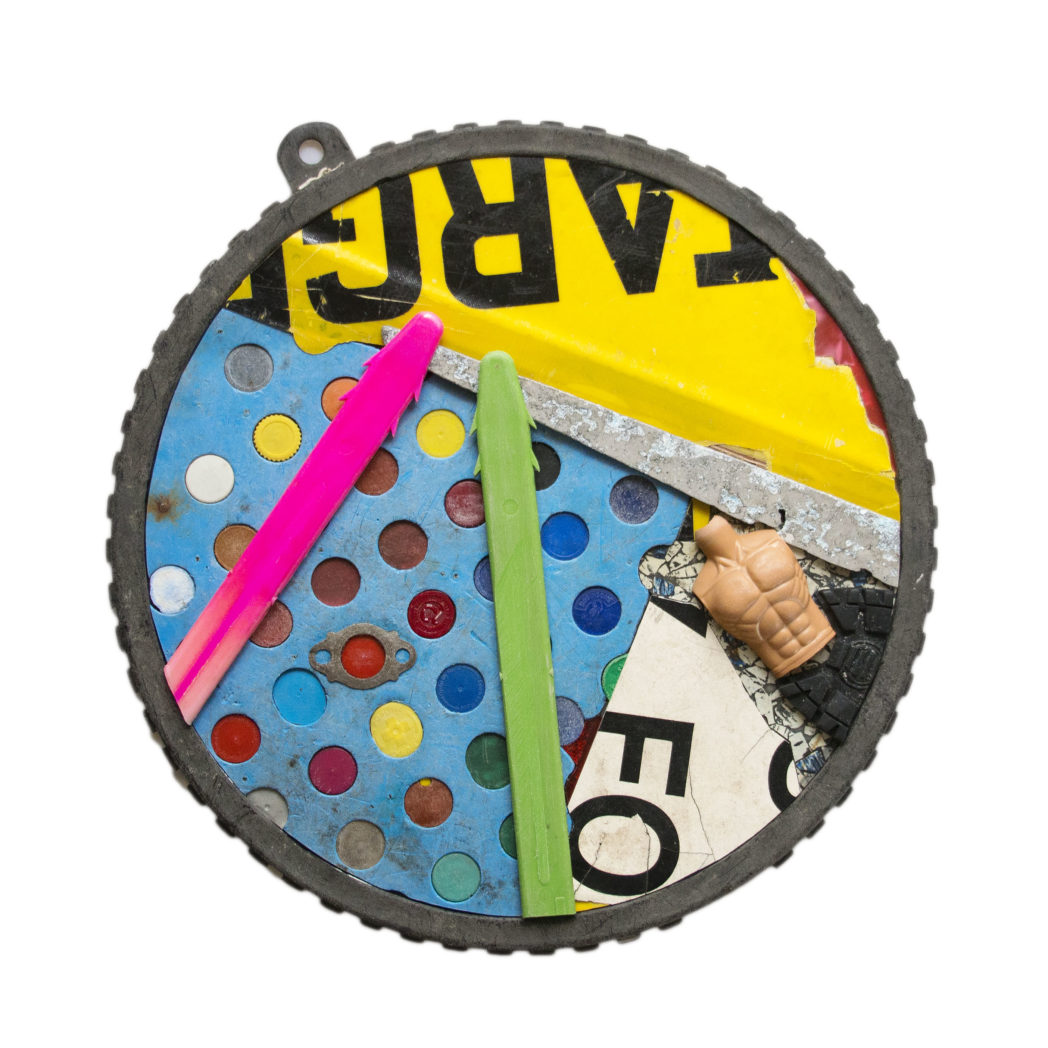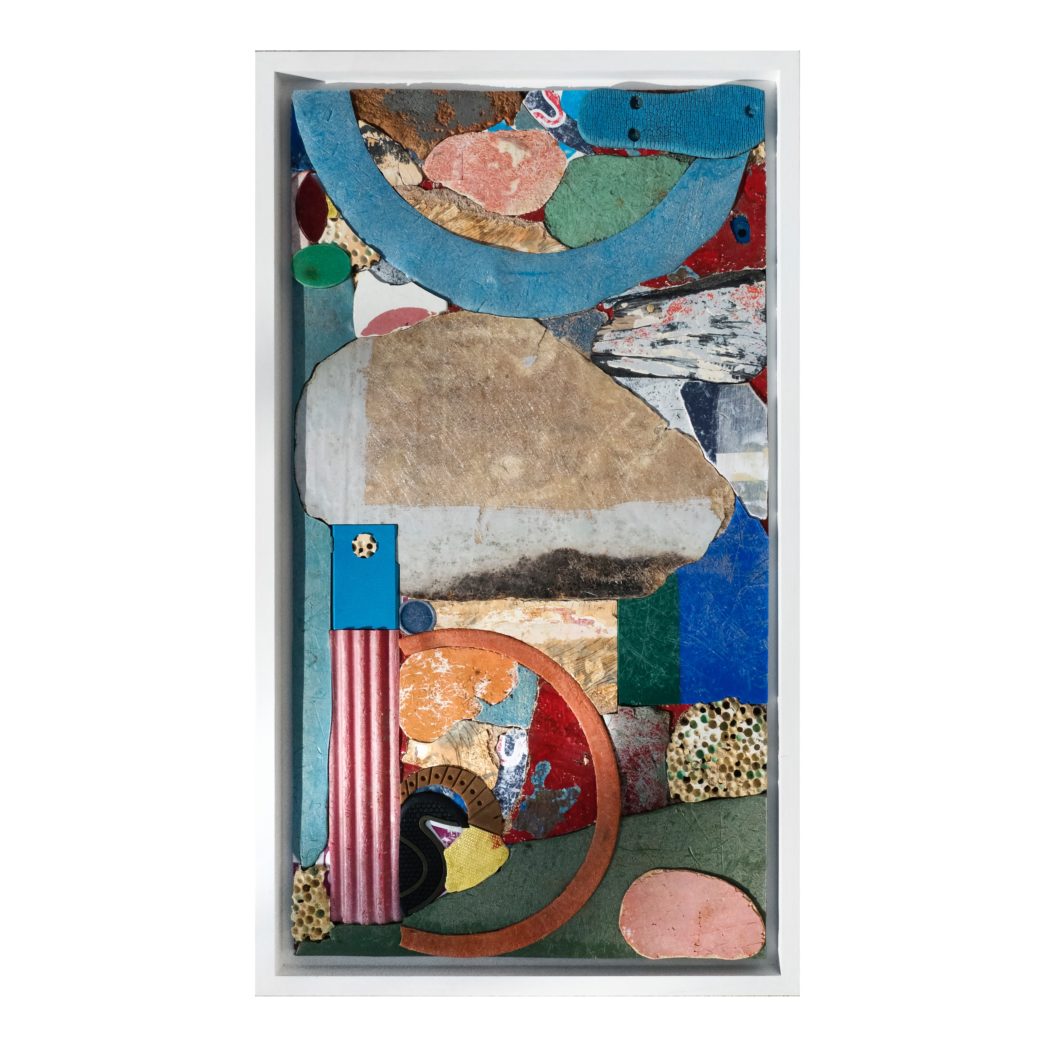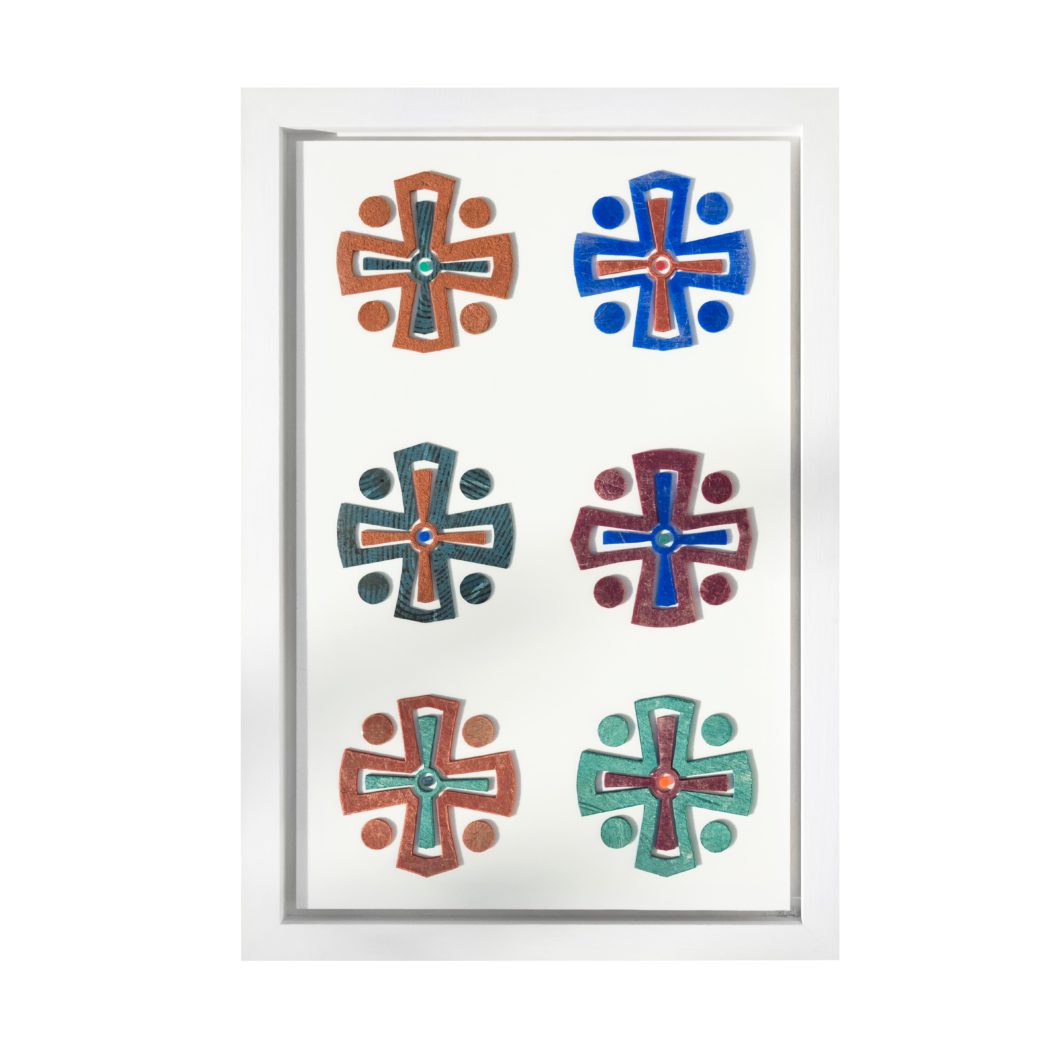Rachel Mainwaring talks to Pembroke artist Richard Blacklaw-Jones about his craft.
It’s a scene that is so easy to picture. A family running along the beach with the children picking up treasures that they find in the hope of making a pretty picture when they get home. And that’s just what happened one sunny Welsh morning for Richard Blacklaw-Jones, who was with his four daughters and their cousins, on a Pembrokeshire beach.
Except when they got home it was him, not the children, that started creating a picture with the items they found. And, not only did he enjoy doing it, he found he had a natural knack of producing some really good art work that he’s forging into a successful career as a modern pop artist.
That was 18 years ago and now Richard, 60, can certainly be considered an international artist, as he has had his abstract and highly original work on show in France as well as the UK. His artwork is made entirely of items found on the beach, from plastic to fibreglass, copper to metal, Paand even dolphin vertebrae, which he had cast in aluminium. He spends many hours searching for delights to transform into pictures.
Richard Blacklaw-Jones: “It was New Year and we were with the children and their cousins and I noticed a huge drift of rubbish on the beach in Little Haven. When we starting collecting things, I had a vague idea of making something with the girls and ended up doing one myself. I took it to a gallery in Haverfordwest and the owner said she liked it and gave me a one-man exhibition.
“I took a lot of my work to the MOMA in Machynlleth and they were very interested in the abstract piece I did and that’s what I’ve been creating ever since. It was a real highlight for me to be given such positive feedback. I love going out to look for stuff, the randomness of it and never knowing what you might find on a particular beach, seeing what the tide and weather have conspired to wash up on to the shore.
“Sometimes there is very little, sometimes there is more but I always try to do back home with a bag of things. Nature shows me the gifts and then I use my imagination to create.”
As the nation becomes more aware of what plastic is doing to the precious wildlife in our oceans, thanks to programmes like Blue Planet, Richard has certainly seen a reduction in plastic products on our beaches recently, and is obviously pleased at the positive outcome for the environment.
But he uses plenty of other man-made products for his work.
Think trainers and shoes, balls, fishing lines and tags, crates, nets, string, rope, glass and bottles. Or bottle tops, bits of old tyres, pens and glass. The variety is endless, with many different colours and textures.
Richard has also just made a piece of work using aluminium casts of dolphin vertebrae that had been washed up on shore.
Richard Blacklaw-Jones: “It was for a work called Monument to the Anthropocene Extinction (pictured below). It was recently seen in St David’s Cathedral where it was part of a group exhibition for Art on the Faith trail and it’s as serious as the title implies. Most beached marine mammals are found (on autopsy) to have ingested quantities of man-made stuff and it’s thought this might be the cause of death for a significant number of them.
“The two smaller triangular shapes are meant to be insects, butterflies or moths. Recent research showed a 70% loss in just the past decade of this class of insect (which have huge importance as pollinators). No pollinators, no food. The artificiality of my representations is to symbolise that if we carry on as we are then this is all we shall have. Digital representations, paintings, sculptures but none of the real thing. I’m not the first to draw attention to this but I’m probably the first artist in Wales to do something about it.”
A therapist by profession, Richard also makes jewellery from beach detritus and runs workshops.
Richard Blacklaw-Jones: “I’ve lived in Haverfordwest for 30 years now and it’s great to have so many lovely beaches in Pembrokeshire. I try to go once a weekend, and access is often limited by tide times, which I keep an eye on. Weekends and bank holidays are most rewarding in the most frequented beaches but it’s truly amazing what the tides washes up and it’ll never stop amazing me. I love creating the pictures and each one has a different message that I’m trying to convey, usually about the sea, the environment, the complexity of human life.”
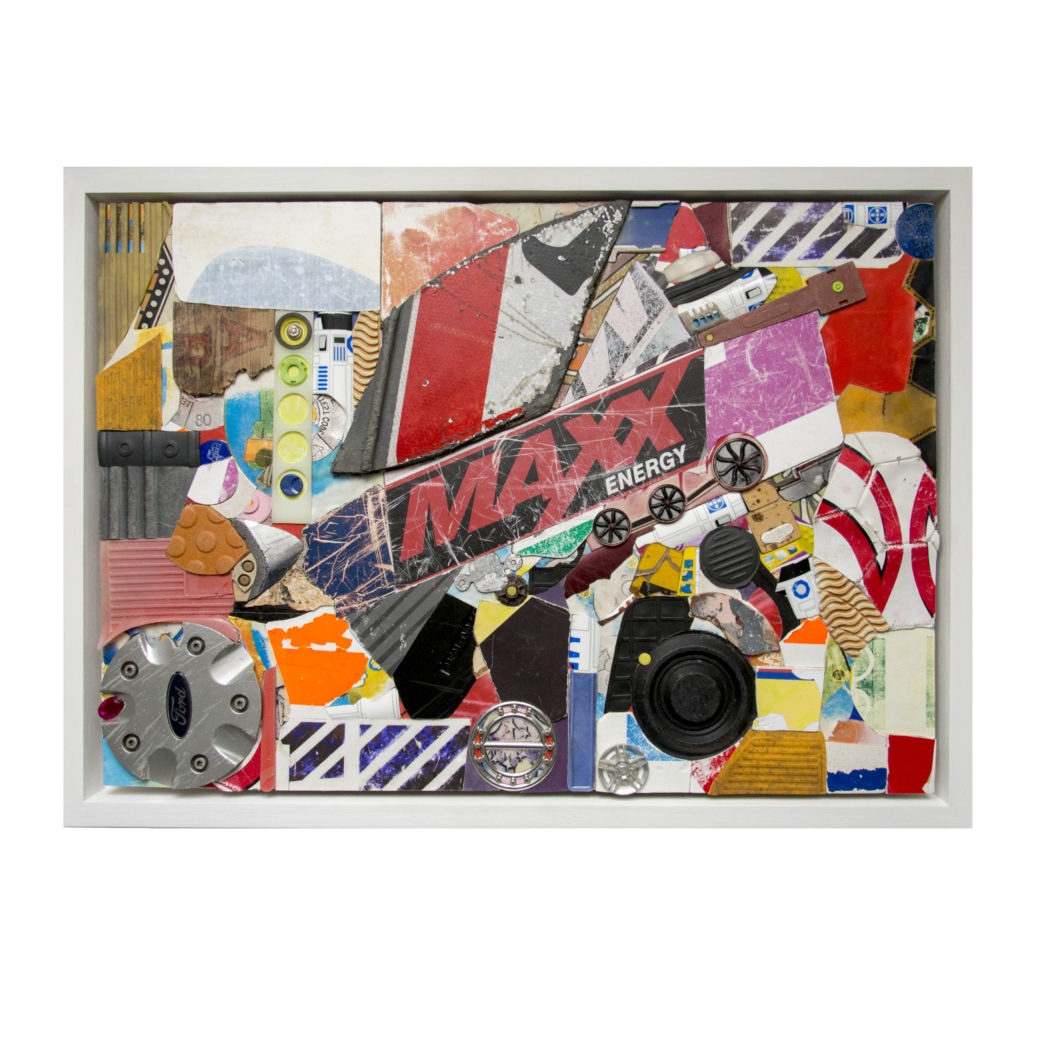 Just Where are We in Such a Rush to Get To?
Just Where are We in Such a Rush to Get To?
Richard Blacklaw-Jones: This one is all about the ever-increasing pace of life. We seem to be rushing headlong into, well, what exactly ? We don’t know but it involves a world which is visibly coming apart at the seams. Some of the concerns which seem unstoppable, ocean warming and acidification. The attendant changes in marine life which will follow. Climate change and increasingly freakish and damaging weather. Wars and attendant population migrations and the political upheavals that have arisen and we are living through now. Resource depletion in general, in particular the depletion of soil. The great extinction of all life but humanity which is proceeding. We are aware of these things but it’s not enough to switch to a reusable coffee cup or buy an electric car instead of a diesel. Business as usual should no longer be an option but I don’t see any real movement in this direction.
So, just where are we rushng to get to?
Richard Blacklaw-Jones: Reference the myriad things you have to keep tabs on while sailing through life’s waters, calm and stormy till you get to the chequered flag at the end.
You’re Still in Their Sights:
Richard Blacklaw-Jones: It’s about how everywhere we turn we are bombarded willy-nilly with adverts trying to make us want stuff. Adverts have to be loud and repetitive and (if you take the area of black and white text in the picture as an example) intrusive or even dominant in our environment. So that bit is larger than the human torso in the picture. It’s a torso deliberately. Adverts are aimed at making us feel, feeling is more a matter of bodily sensation than in the head thinking. The large metal and plastic spike shapes are there to reflect advertising parlance. Ads which work are regarded as having “good penetration” ie they’re aimed to stick in you. The holes in the large blue area are mostly filled with bits having brand names on to reflect the multiplicity and prevalence of advertising in ones life. The big yellow bit has part of the word “target” on it which reflects our status to this industry. It’s all framed in the ready-made black plastic circle. I don’t know what this was but you might think of it as being the view through a rifle sight as the advertiser takes aim.
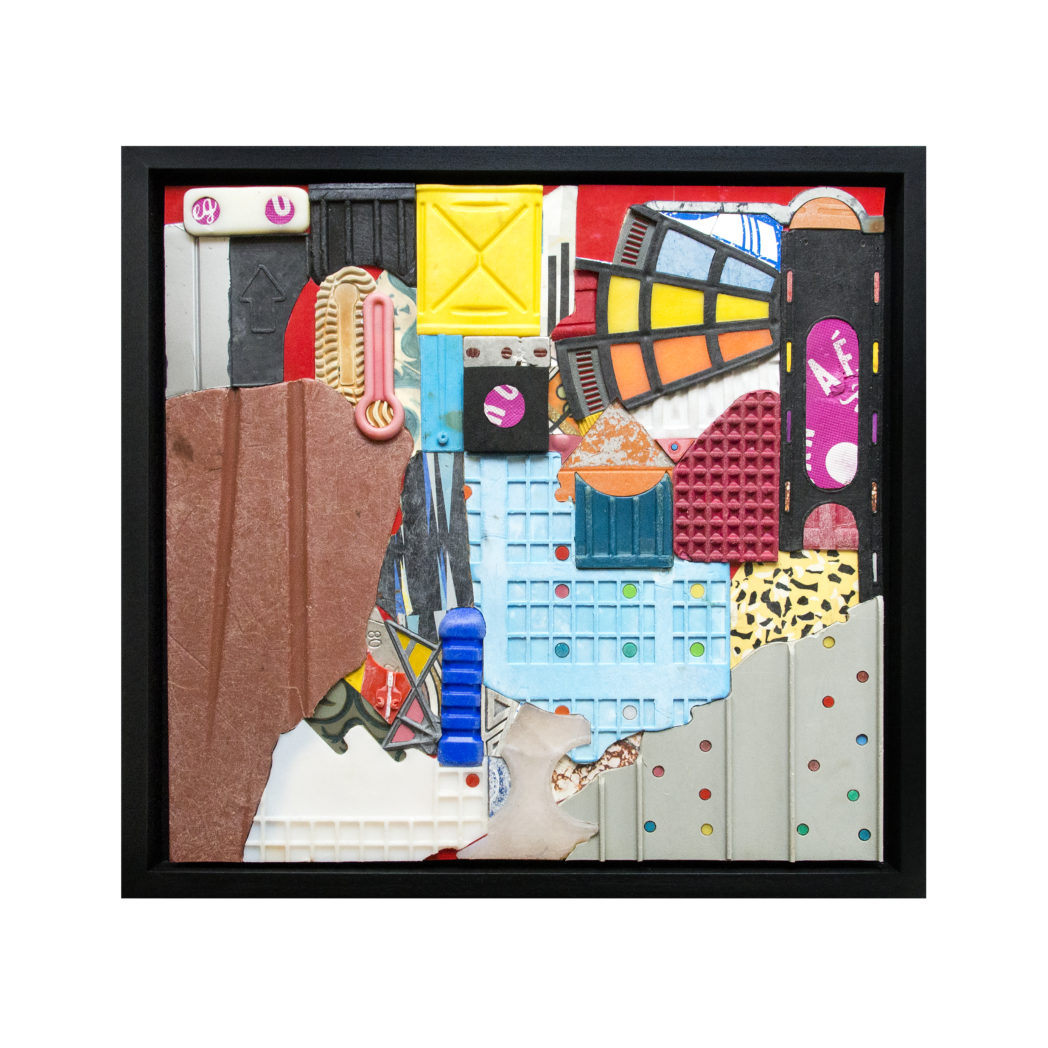 Cocktails at the Traffic Lights:
Cocktails at the Traffic Lights:
Richard Blacklaw-Jones: I wanted to make something combining mans ordered, regular, architectural environment with an element of the chaotic, unpredictable natural world which is always there. The result suggests to me a night-time view of a busy urban area, all colourful high rises, neon lights, busy streets and noise. The pinkish material with printed lettering on that I have used to fill holes in other materials is there to represent snatches of conversation, ambient noise in that urban environment.
Richard Blacklaw-Jones: I wanted to make a different feeling with this picture. Something less shouty and brash than a lot of my stuff has been. This is more misty, suggestive of distant vistas and reflection/ contemplation. There is even a sense of memorial or elegiac quality here. Maybe we forgot to look after our own patch, maybe we regret larger concerns.
Warhol Meets St David:
Richard Blacklaw-Jones: The cross and dots pattern arises from some of the designs seen in the encaustic tiles on the floor of parts of St David’s Cathedral. My multiplying them and arranging them as seen is clearly a reference to some of Warhol’s print multiples.
You might also like…
Wales Arts Review is proud to present Arts and the Circular Economy, a new series of articles by Brian Royson Mayne, exploring the ways in which different art forms are promoting sustainability and embracing the circular economy. In this second article, Brian Royson Mayne explores the ways in which the visual arts have incorporated principles of the circular economy into their work.
Rachel Mainwaring is a contributor to Wales Arts Review.


